Top 10 Most Dangerous Roads In The US
 |
| Top 10 Most Dangerous Roads In The US. Photo KnowInsiders |
According to the National Highway Traffic Safety Administration (NHTSA), in 2020 the U.S. had its highest fatality rate since 2007 — reaching 1.37 fatalities per 100 million vehicle miles traveled.
Anytime you get behind the wheel of a vehicle, there’s a chance you might get into a wreck. That said, the likelihood of being in a motor vehicle collision dramatically varies depending on which road you’re driving on.
We analyzed the most recent Fatality Analysis Reporting System data to assess which roads, counties and states have the most risk for drivers based on the number of fatalities in motor vehicle collisions.
Top 10 Most Dangerous Roads In The US Ranked
(By US Fatality Analysis Reporting System)
1. I-95
2. I-20
3. I-5
4. I-75
5. I-35
6. I-15
7. I-40
8. I-70
9. I-80
10. US-41
*****
What Are The Most Dangerous Roads In The US
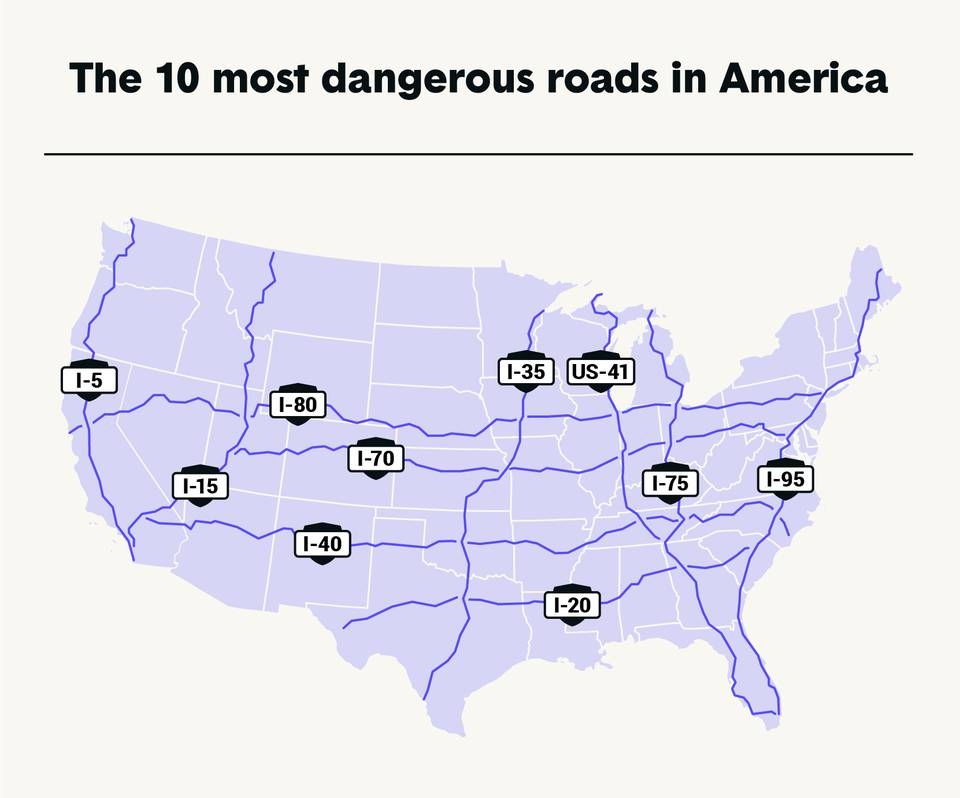 |
| Photo The Zebra |
1. I-95
| Miami to Houlton, Maine (1,908 miles) Deaths per mile: 0.637 Deadliest city: Jacksonville, Florida |
According to NHTSA’s data, I-95 is the most dangerous highway in the United States. In 2019, it had the highest number of overall fatalities (284) and fatalities per 100 miles (14.88).
Many of these accidents occurred in the northeast in the winter, when road conditions were far from ideal. A large portion of accidents also occurred on the east coast of Florida in Jacksonville and Brevard County, which sits outside of Orlando.
2.I-20
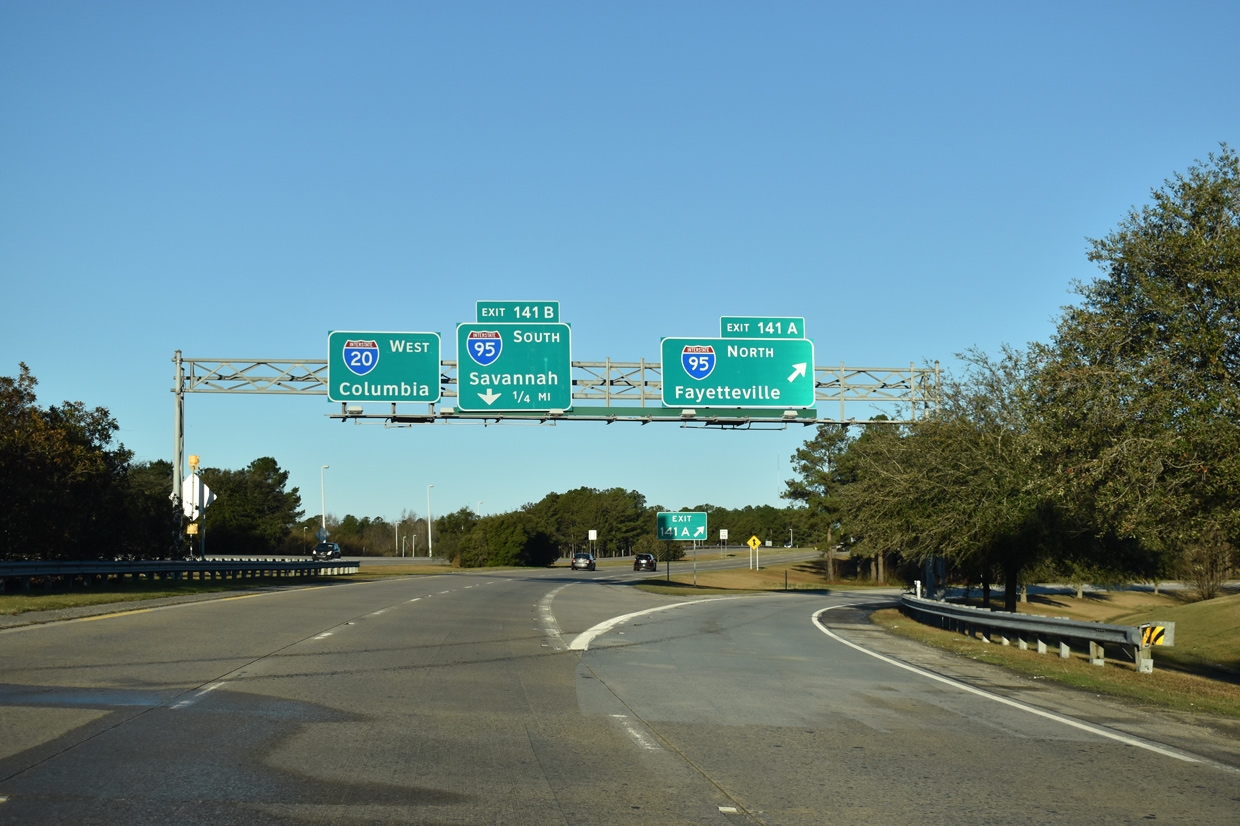 |
| Photo Interstate Guide |
| Scroggins Draw, Texas, to Florence, South Carolina (1,539 miles) Deaths per mile: 0.549 Deadliest city: Dallas |
I-20 is one of the shorter highways on the list but is still quite dangerous. Beginning in West Texas and continuing through South Carolina, I-20 runs through several high-traffic areas including Dallas, Texas; Jackson, Mississippi; and Atlanta, Georgia; all of which contributed to the highway’s total number of fatalities.
3.I-5
| San Ysidro, California, to Blaine, Washington (1,381 miles) Deaths per mile: 0.609 Deadliest city: Los Angeles |
From 2015 to 2019 on I-5, 544 deadly crashes killed 584 people. This means that 107.4 people were killed for every 100 crashes.
I-5 runs nearly 800 miles long up the length of California, but the deadliest spot for motorists is in San Diego County. In this sector, 110 people were killed in 99 fatal accidents. Beyond San Diego County, at least 50 people were killed in fatal automobile crashes in Los Angeles, Kern, Orange, San Joaquin and Sacramento County’s portions of I-5.
READ MORE: Top 5 Longest Highways in the World
4.I-75
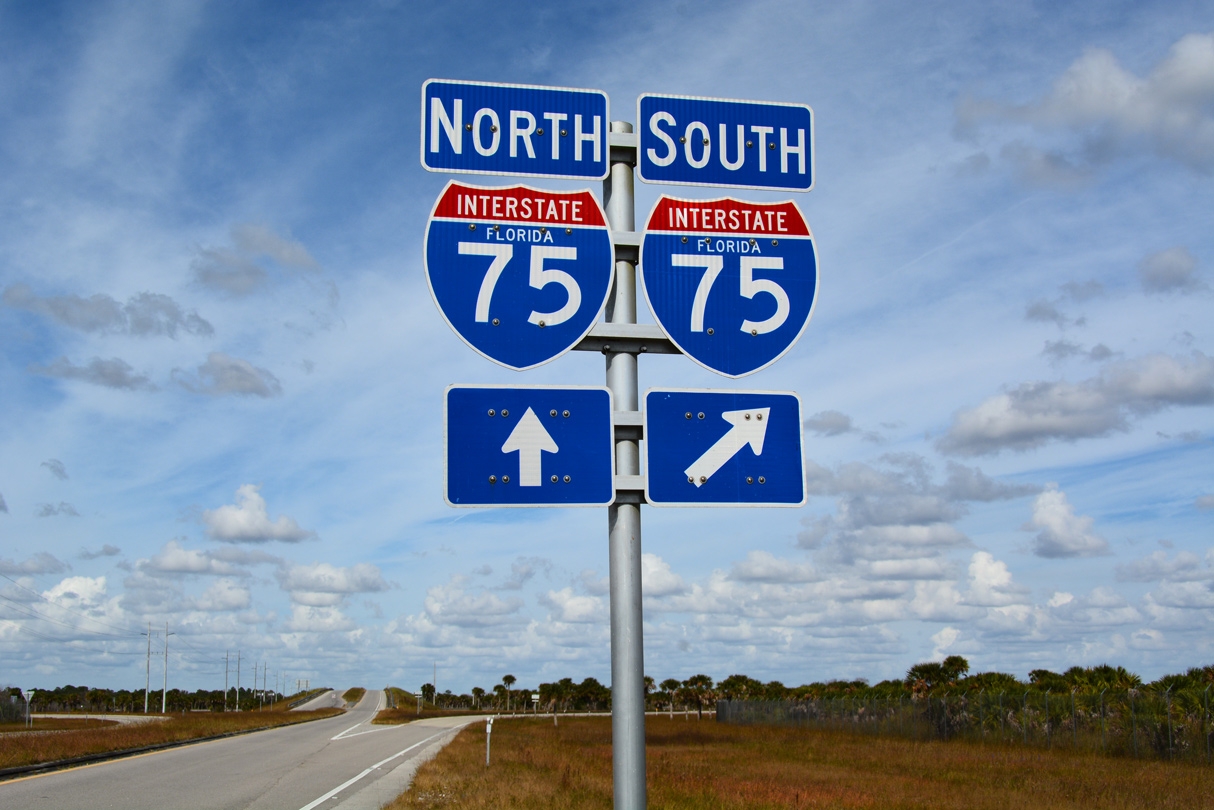 |
| Photo Interstate Guide |
| Miami Lakes, Florida, to Sault Ste. Marie, Michigan (1,786 miles) Deaths per mile: 0.521 Deadliest city: Atlanta |
From the icy grips of northern Michigan down to the warm lakes pooling the outskirts of Miami, Interstate 75 offers plenty of Floridian natural beauty off of its many exits. But, with its long route to fun and games, Interstate 75 plays no game when it comes to its increasing number of tragic accidents.
According to the DOT, the accident rate on I-75 crossing through Alachua County is 90% higher than the statewide average for similar roads. Even worse, the number of vehicle wrecks jumped from 935 in 2011 to 1,538 in 2015 and is still increasing today.
One Tennessee family recently took I-75 from Nashville to Orlando and noticed how much faster drivers were speeding on the interstate, specifically from Lake City south. The husband, Mark Quarles, even said, “It’s like a NASCAR race because people generally know there is not going to be any state trooper presence on I-75 on the Florida side.” With speeding drivers on an already congested highway, travelers are finding it increasingly more difficult to avoid being in an accident
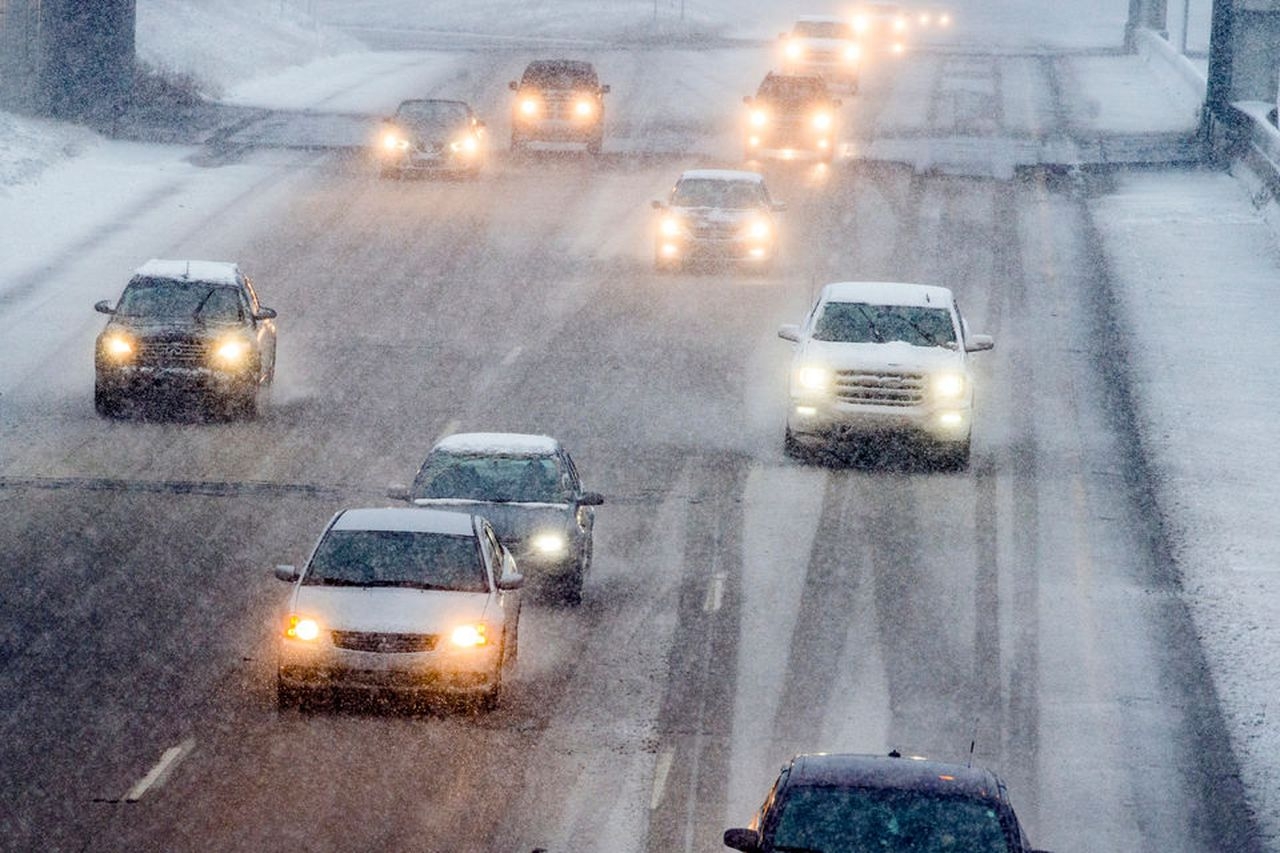 Top 10 Most Dangerous States In America For Winter Driving Top 10 Most Dangerous States In America For Winter Driving Floods and tornadoes may get all the headlines, but neither is the deadliest weather hazard. It’s driving in winter weather. Be careful when you drive ... |
5.I-35
| Hillsboro, Texas, to Denton, Texas (97 miles) Deaths per mile: 0.496 Deadliest city: Dallas |
I-35 stretches from Laredo, Texas, near the Mexican border to Duluth, Minnesota, near the Canadian border. I-35 is deadly for several reasons. One, because it runs through three heavily-populated cities in Texas: San Antonio, Austin and Dallas. Secondly, I-35 is the de facto route for thousands of 18-wheeler trucks, which makes it especially dangerous to navigate in some areas.
Is it becoming more dangerous to drive?Despite Americans traveling fewer miles in 2020, there was an estimated 7.2% increase in the number of vehicle-related fatalities compared to 2019. How can this be?Well, according to the Federal Highway Administration (FHWA), Americans drove 430.2 billion miles less in 2020 than compared to 2019, or about a 13.2% decrease. This dramatic drop-off in mileage is in part due to the COVID-19 pandemic when a greater percentage of people stayed home. The decrease in vehicle miles traveled (VMT) combined with an increase in vehicle-related fatalities resulted in a steep increase in the fatality rate per 100 million VMT (1.37) in 2020. This was a 26% increase from 2019 and the highest fatality rate since 2007 (1.36). |
6.I-15
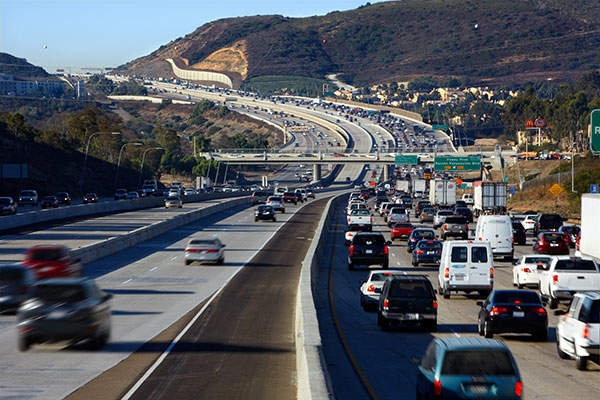 |
| Photo Road Traffic Technology |
Starting at number one on our list of dangerous roads in Utah is the well-traversed Interstate 15. Running north to south through most of the state, I-15 passes through many of Utah’s most heavily populated regions, including Ogden, Salt Lake City, and Provo, all the way down to St. George. Anyone who has traveled this highway knows I-15 is a traffic hot spot for trouble. Here are the highest risk factors for an accident on this roadway.
| Risk Factors: High speed limit (75 mph) Limited visibility due to large vehicles Heavy traffic congestion Accident-prone roadway |
Interstate 15 has seen thousands of accidents in the last few years, and while Utah cities continue to grow, this highway is not getting any bigger…at least not for now. If you frequently use I-15 or plan to travel through Utah, remember to drive with caution on this route and be mindful of other drivers around you.
7.I-40
According to a study based on data from the National Highway Traffic Safety Administration (NHTSA), the segment of I-40 running through Tennessee is the state’s deadliest highway. The 455-mile section of Interstate 40 that runs through Tennessee had 437 crashes and 517 fatalities during the 10-year study period between 2006 and 2015. Tennessee’s crash statistics were second only to US-1 in Florida, which had roughly twice as many accidents.
| Why Is I-40 so Dangerous? There are a number of factors that can contribute to the safety of a road. Among the most common are Weather conditions; Day driving versus night driving; Road conditions, such as snow or rain; Whether a road is maintained and repaired; and Whether drivers are distracted or impaired. |
8.I-70
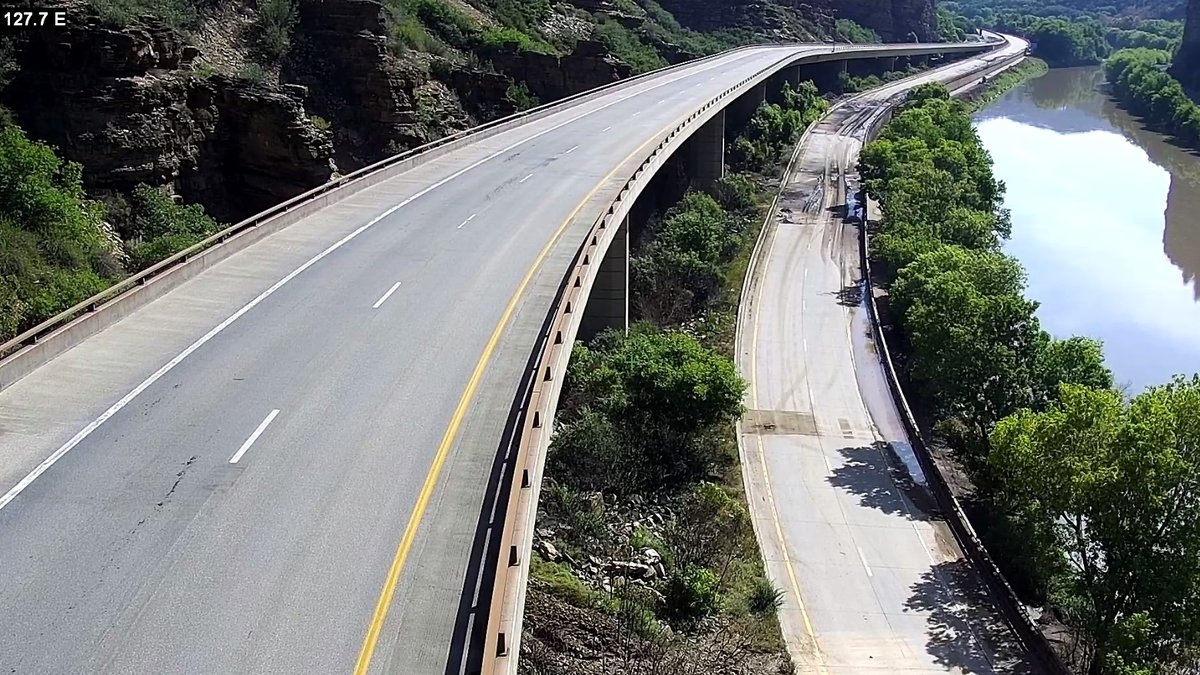 |
| Photo KKTV |
Interstate 70 ranks 3rd on our list of dangerous roads in Utah for having a scenic yet perilous route. Known as one of the main interstate routes connecting the east coast to the west (almost), the portion of I-70 in Utah is one of the few roadways that doesn’t actually pass through any major cities. Nevertheless, this highway presents imminent danger to those unfamiliar with driving on desolate roadway systems. The following risk factors will help any driver see the true peril of Interstate 70.
| Risk Factors: Zero services from Green River to Salina High peak elevation (7,886 feet) Snaking turns through Spotted Wolf Canyon More opportunities for distractions Due to its long stretches of nothingness and steep climbs up to mesmerizing canyon views, it’s no surprise that this highway has made it onto our list. All drivers should be prepared when traveling this route, especially for the 100 miles between Green River and Salina. |
9.I-80
Interstate 80 differs from I-70 in that it actually runs from east to west and traverses the entire United States. This route begins in downtown San Fransisco, California and travels all the way up to Teaneck, New Jersey. In fact, it is one of the original highways constructed in 1956. Unfortunately though, I-80 ranks third in Utah for having the highest traffic fatalities in the state. Like other roadways on our list, I-80 has a high speed limit. Navigating this area has caused some deadly accidents in the past. Here are the following risk factors to driving on I-80 through Utah.
| Risk Factors: Passes right through “spaghetti bowl” in SLC Dangerous winter road conditions Various animal migration areas High speeding zone |
10.US-41
U.S. Highway 41, which begins on the Indiana side of the Ohio River in Evansville, is the deadliest highway in the state, according to research by GPS/fleet management company Geotab.
About 11 people per year die on U.S. 41, or 111 total deaths in the years spanning 2008-2017, from which the data was taken.
Driving Techniques You Can Use to Avoid Accidents
 |
| Photo Driving |
Fortunately, whether you’re driving on I-40 or another highway through Nashville, there are several things you can do to avoid getting in an accident. A big part of driving safely comes down to just a few simple techniques.
Drive the Speed Limit
Posted speed limits exist for a reason. Many crashes occur because a driver is going too fast. Traveling at higher speeds reduces our reaction time, making it harder to slow down and easier to lose control. Not only are high-speed accidents more severe, they are also more likely to occur. Driving more slowly gives you more time to take in your surroundings and react appropriately.
Maintain a Safe Distance from Other Drivers
At the common highway speed limit of 65 miles per hour, you travel nearly 20 feet in the time it takes to blink (about two-tenths of a second). That may not seem like much, until you realize that that’s only a few feet longer than the average car. Even at lower speeds, leaving plenty of space between you and other vehicles will help you get to your destination safely.
Don’t Drive Distracted
Everyone knows that you shouldn’t drink and drive. But many people are unaware that talking on a cell phone or messing with the radio can impair our driving just as much. Crashes involving distracted driving injured an estimated 400,000 people in 2018, and were responsible for the deaths of 2,841 people. Even talking on a hands-free device is enough to take our full attention away from the road.
Wear a Seat Belt
If you do get into an accident, wearing a seat belt reduces the chances you will be seriously injured or killed in an accident by 50%. According to NHTSA, about half of passenger vehicle fatalities are people who were not wearing their seat belt.
What to Do After an Accident on an Interstate
Because of where they happen, highway accidents are unique compared to car crashes that happen on other roads. Accidents on the highway often occur at much higher speeds. As a result, injuries and property damage may be much worse. Additionally, the extra traffic can make getting to safety and getting help more difficult.
Always call emergency personnel if anyone is injured in an accident on the interstate. Even in crashes that seem relatively minor, concussions can occur, and leaving them untreated can have long-term consequences. Unfortunately, concussions and other injuries are not always immediately apparent. As a result, it is in your best interest to accept medical care offered to you at the scene, even if you feel fine.
If possible, you should also try to move your vehicle to the side of the road. This will help you stay safe and prevent traffic from backing up further, allowing emergency vehicles to reach you faster.
Gather Information and Evidence About the Crash
Collecting evidence of a crash and who was at fault is crucial to any future insurance claim. Even if you aren’t planning legal action at the time, unexpected health complications or expenses caused by the accident may cause you to reconsider.
Obtaining a police report and letting officers investigate the scene can potentially help support your claim. In addition, you should gather some evidence yourself; take photos of the accident from a few different angles, and get insurance information from the other driver.
Talk to a Lawyer
After the accident, consider hiring a car accident lawyer. A lawyer can help you determine what kind of settlement is available and, in some cases, may refer you to a physician for medical treatment.
Do Not Leave the Scene Too Early
Anyone involved in a car accident in Tennessee must stop and stay at the scene. Committing a hit and run by leaving the scene too early is a misdemeanor. Under T.C.A. § 55-10-103, anyone involved in a car accident, even if there is only damage to a vehicle, must provide their personal information and render “reasonable assistance” to anyone who is injured.
 Top 8 Oldest Roads In The US Top 8 Oldest Roads In The US A list of the oldest roads in the US-check it out! |
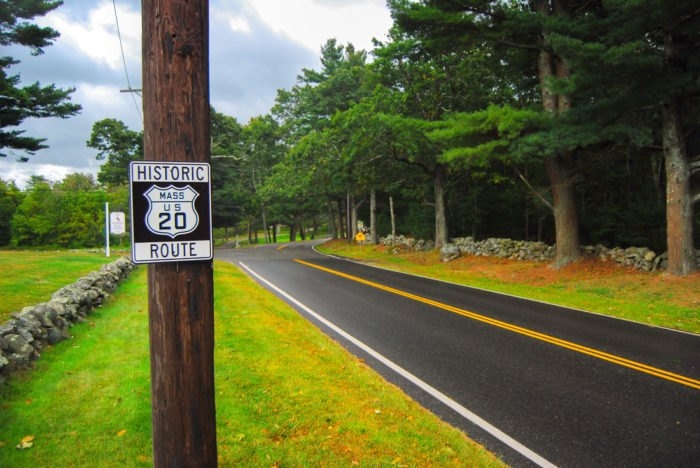 What Is The Longest Road In The US? What Is The Longest Road In The US? US Route 20 is the longest road in the US. Read on to know interesting facts and driving tips. |
 Top 15 Most Scenic Roads In America Top 15 Most Scenic Roads In America Craving for a road trip during the pandemic? Check out our list of the most scenic roads in the US. |



























